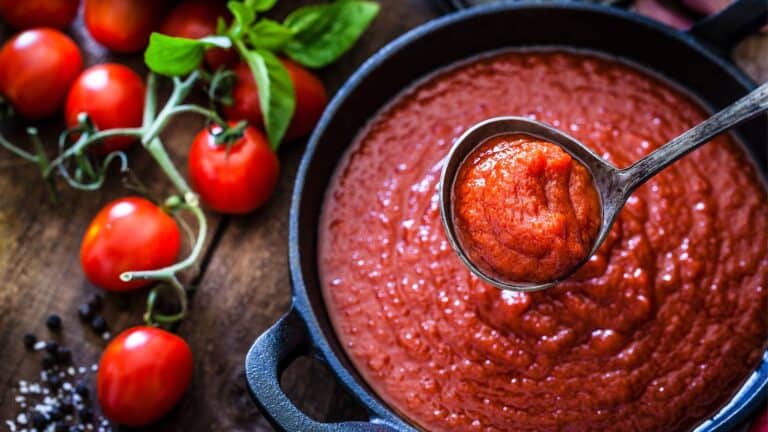Tips On How To Design A Weekly Dinner Menu Easily

Designing a weekly dinner menu can be a game-changer in your daily routine, saving you time, reducing stress, and ensuring that you and your family enjoy balanced, nutritious meals. It might seem daunting at first, but with a little planning and organization, you can master the art of meal planning and make dinnertime a breeze. This guide will walk you through the steps to design a weekly dinner menu that suits your lifestyle, tastes, and dietary needs.
Why Plan a Weekly Dinner Menu?
Before diving into the how-tos, it’s important to understand the benefits of planning a weekly dinner menu:
- Saves Time: By planning your meals in advance, you avoid the daily scramble of figuring out what to cook. This frees up time during the week for other activities.
- Reduces Stress: Knowing what’s for dinner takes the guesswork out of meal prep, making cooking less stressful and more enjoyable.
- Promotes Healthy Eating: Planning allows you to include a variety of nutritious meals, helping you avoid last-minute unhealthy choices like takeout or processed foods.
- Saves Money: With a set menu, you can make a precise grocery list and avoid impulse purchases, reducing food waste and saving money.
- Encourages Variety: When you plan ahead, you can ensure that your meals are diverse, preventing the monotony of eating the same dishes repeatedly.

Step 1: Assess Your Week
The first step in designing a weekly dinner menu is to assess your upcoming week. Consider the following:
- Schedule: Look at your weekly schedule. Identify busy days when you might need a quick and easy dinner, and plan more elaborate meals for nights when you have more time to cook.
- Special Events: Take note of any special events or commitments, such as dinner parties, date nights, or school functions, that might affect your dinner plans.
- Dietary Needs: Consider any dietary restrictions or preferences in your household. This could include vegetarian options, low-carb meals, or meals free from allergens like gluten or dairy.
By understanding the demands of your week, you can tailor your menu to meet your specific needs.
Step 2: Choose a Theme for Each Day
One of the easiest ways to simplify meal planning is to assign a theme to each day of the week. This approach provides structure while allowing for creativity within each category. Here are some popular themes:
- Meatless Monday: Start the week with a plant-based meal. It’s a great way to incorporate more vegetables into your diet and explore vegetarian recipes.
- Taco Tuesday: Celebrate mid-week with tacos or any Mexican-inspired dish. Think burritos, enchiladas, or quesadillas.
- Pasta Wednesday: A pasta night is quick and comforting. You can switch it up with different sauces, shapes, and proteins.
- Thrifty Thursday: Use this day to make a budget-friendly meal, perhaps utilizing leftovers or pantry staples.
- Fish Friday: Include a seafood dish to ensure you’re getting those heart-healthy omega-3s.
- Slow Cooker Saturday: If you have a busy weekend, let your slow cooker do the work. Prepare a dish in the morning and have dinner ready by evening.
- Sunday Roast: End the week with a hearty meal, such as a roast chicken or a pot roast, which can also provide leftovers for the start of the next week.
Themes not only make planning easier but also help ensure variety and balance throughout the week.
Step 3: Gather Recipes
Once you’ve set your themes, it’s time to gather recipes. You might already have a collection of go-to recipes, but this is also an opportunity to try something new. When selecting recipes, consider:
- Preparation Time: Choose recipes that fit the amount of time you’ll have on each particular day. Quick recipes are perfect for busy nights, while more elaborate dishes can be saved for when you have extra time.
- Nutritional Balance: Ensure that your menu includes a balance of protein, vegetables, and whole grains. This will help you maintain a healthy diet throughout the week.
- Seasonality: Opt for recipes that use seasonal ingredients, which are often fresher, more flavorful, and more affordable.
- Family Preferences: Involve your family in the process by asking for their input on meal ideas. This increases the likelihood that everyone will enjoy what’s on the table.

Step 4: Create a Grocery List
With your menu set and recipes in hand, create a grocery list. This is one of the most critical steps, as it ensures you have all the ingredients you need for the week ahead. When making your list:
- Check Your Pantry: Before adding items to your list, check what you already have on hand. This prevents you from buying duplicates and helps you use up existing ingredients.
- Organize by Section: Write your list in the order of how your grocery store is laid out (e.g., produce, dairy, meat). This saves time and makes your shopping trip more efficient.
- Include Snacks and Sides: Don’t forget to add items for snacks, sides, and breakfast if you plan to prepare those meals as well.
Step 5: Prep in Advance
To further ease your week, consider prepping some ingredients in advance. This could include:
- Chopping Vegetables: Pre-chop vegetables for the first few days of meals to save time during the week.
- Cooking Grains: Cook rice, quinoa, or pasta ahead of time and store them in the fridge.
- Marinating Meats: Marinate meat or tofu a day before to enhance flavor and reduce prep time.
- Batch Cooking: Make large batches of soups, stews, or casseroles that can be eaten over several days or frozen for later use.
Step 6: Be Flexible
While a weekly dinner menu provides structure, it’s important to remain flexible. Life happens, and you may need to adjust your plans. Don’t be afraid to swap meals between days or even skip a planned meal if something unexpected comes up. The key is to have a plan that guides you while still allowing room for spontaneity.
Designing a weekly dinner menu is a practical way to simplify your life, promote healthy eating, and make mealtime more enjoyable. By assessing your week, choosing themes, gathering recipes, and prepping in advance, you can create a menu that works for your lifestyle. With a little practice, meal planning will become second nature, transforming dinner from a daily challenge into a rewarding routine.






